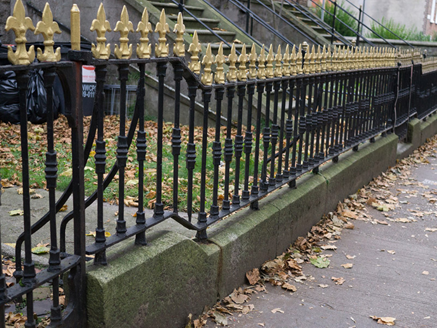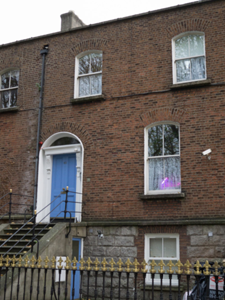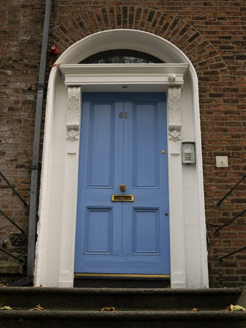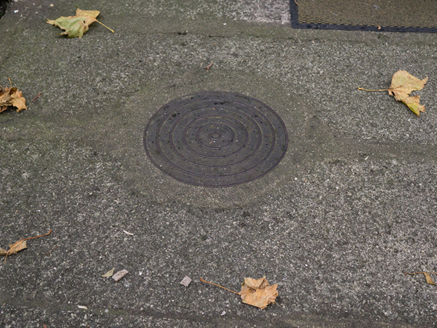Survey Data
Reg No
50120184
Rating
Regional
Categories of Special Interest
Architectural, Artistic
Original Use
House
In Use As
Apartment/flat (converted)
Date
1850 - 1870
Coordinates
316111, 236300
Date Recorded
30/10/2017
Date Updated
--/--/--
Description
Terraced two-bay two-storey former house over basement, built c. 1860 as one of six. Now in use as flats. Pitched M-profile roof having brick parapet with cut granite coping, and rendered chimneystack. Red brick walls, laid in Flemish bond, having cut granite plinth course over rusticated granite ashlar basement walling to front (west) elevation. Segmental-headed window openings with rendered reveals and granite sills to front, with square-headed opening to basement, latter with rendered reveals and red brick surround; replacement timber two-over-two pane timber sliding sash windows to ground and first floors, and replacement uPVC to basement; square and round-headed window openings apparent to rear, with three-over-three pane, six-over-six pane and two-over-two pane frames. Elliptical-headed doorway with render reveals and doorcase comprising timber panelled pilasters, fluted brackets with foliate and acanthus leaf detail, moulded cornice, timber panelled door and plain fanlight. Granite paved platform having ruled-and-lined rendered walls beneath with square-headed replacement door. Cast and wrought-iron railings on cut granite plinth to flight of nine nosed granite steps, having cast-iron coal-hole cover and remains of cast-iron bootscrape. Cast-iron gate to front, with matching railings set on cut granite plinth wall.
Appraisal
The massing and materials of this house are characteristic of suburban domestic architecture in the Victorian period in Dublin, while the unusual, slight irregularity of the bays adds a unique character to the terrace. The house has a strong sense of its original character and the patina of age is enhanced by the well-made ironwork, including the coal-hole cover and bootscrape. The coal-hole is the only surviving example in this terrace and is an important indication of the features associated with now defunct household management practices. The doorcase shows some artistry, adding an aesthetic appeal that greatly enhances the structure and the wider streetscape. Drumcondra Road Lower is part of the Great Drogheda Road, one of the principal ancient routeways leading north from the city. The planting of the London limes along the road verges in the eighteenth century coincided with the beginning of development of these terraces of red brick houses, and contributes to the character of this streetscape.







